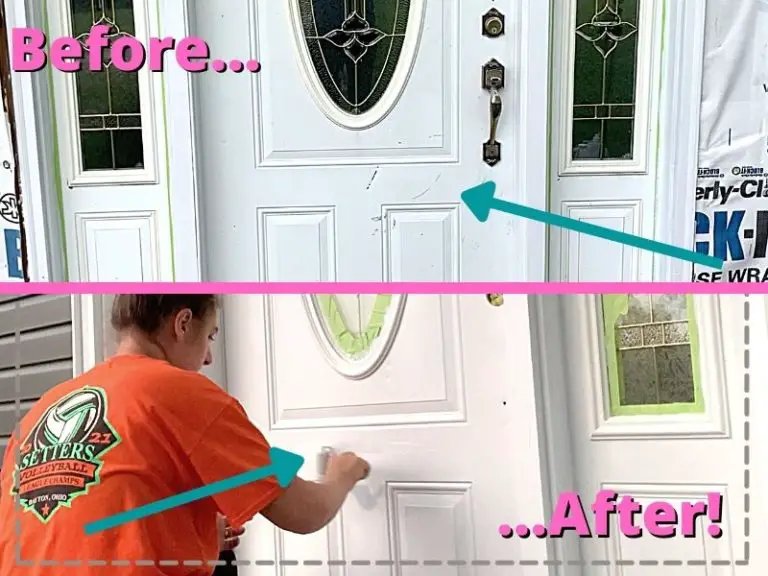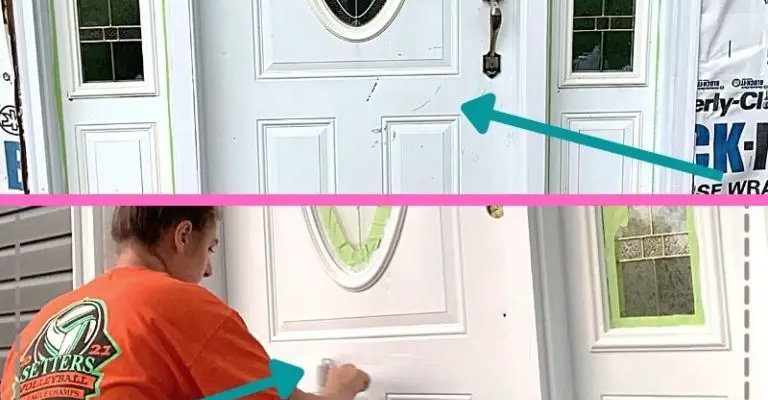
The thing is, most exterior door hardware—from brands like Schlage, Kwikset, Yale, and Baldwin—is built tough. But even the best finishes, whether it’s shiny brass, brushed nickel, or matte black, can’t fight off daily life forever. Here’s the good news: you don’t need fancy equipment or years of experience for this kind of TLC. Most of the time, a few simple supplies and a little patience are all you need to repair minor dents and scratches, restore the look, and keep everything running smoothly.
Spotting Damage: What Counts as a Minor Dent or Scratch?
Before jumping into repairs, it helps to know what you’re actually dealing with. Not every mark or ding means you need to tear out your handle or lock. Here’s the thing: *minor* dents and scratches are the everyday, surface-level annoyances—not deep gouges or bent hardware. You’ll usually find them as:
- Shallow scratches from keys, rings, or zippers
- Tiny dings where something’s bumped the handle or plate
- Light surface scuffs that catch the light but don’t go deep
Honestly, these kinds of flaws are mostly cosmetic. They don’t affect the way your Schlage or Kwikset lock works, and your door will still close just fine. But, if you leave them alone for too long, grime and moisture might sneak into the scratches, making them worse over time or even causing rust—especially on older hardware or anything with a bare-metal finish.
Take a close look at your hardware from a few different angles. If you can feel the scratch with your fingernail, but it doesn’t seem like metal is missing or the part is bent, you’re probably in the “minor” category. Anything deeper, or if the hardware seems loose, might be a job for a replacement.
Gathering Your Tools and Supplies
You don’t need to run out for anything fancy, but a few basic supplies will make the job easier. Most of these are probably already in your toolbox or cleaning cabinet. Here’s what you’ll want on hand:
- Soft microfiber cloths for cleaning and buffing
- Mild soap and water to remove dirt before you start
- Fine-grit sandpaper (1000–2000 grit) for smoothing out rough spots
- Metal polish or scratch remover made for your hardware’s finish (brass, nickel, etc.)
- Small plastic or wooden dowel for tapping out tiny dents
- Protective gloves if you’re using any chemicals
Let me explain something quickly: never use steel wool or harsh abrasives, even if you’re tempted. They can do more harm than good, leaving your exterior door hardware looking even worse. Always match the repair product to your finish (brass polish for brass, etc.), or you might end up with a two-tone door handle and a bad mood.
Cleaning the Hardware Before Repairs
It’s tempting to dive straight in with polish, but honestly, cleaning is the step you can’t skip. Dirt and tiny grit hiding in the scratches will just grind into the finish if you start buffing right away. So, here’s how to get started:
- Mix a few drops of mild soap in warm water.
- Dampen your microfiber cloth and gently wipe down all surfaces—handle, plate, lock.
- Focus on the damaged areas, but give the whole piece a once-over. You never know where gunk is lurking.
- Rinse with a clean, damp cloth to remove any soapy residue, then dry thoroughly.
If you notice a little grime stuck around the screws or in crevices, use a soft toothbrush, but don’t scrub too hard. Once everything’s clean and dry, you’ll see the true extent of any dents or scratches. Sometimes, what looked like a scratch was just a streak of dirt, and sometimes you’ll uncover spots you missed before.
Cleaning first isn’t just about looks—it means you won’t trap debris under a new layer of polish or repair compound.
Smoothing Out Minor Scratches
Now, the real magic: smoothing out those annoying surface scratches. This step takes a bit of patience, but you don’t need special skills. Here’s the routine most people use on exterior door hardware:
- For brushed or satin finishes: Use very fine (2000 grit) sandpaper. Lightly sand in the direction of the grain—never in circles.
- For polished (shiny) brass or chrome: Avoid sanding if possible; go straight to a metal polish or scratch remover, using a soft cloth and gentle, even pressure.
- Wipe off any dust with a clean cloth between passes.
- Keep the area slightly damp to prevent friction damage if you’re sanding.
Don’t be discouraged if the first try doesn’t make scratches disappear. It usually takes a few gentle passes. For deeper scratches that still won’t budge, you can use a tiny dab of matching touch-up paint (sometimes included with high-end brands like Baldwin) or even a repair pen if your hardware is painted.
The trick is not to overdo it. Too much sanding or polishing wears away the finish, leaving a dull patch. If you’re unsure, start slow and check your work in good light.
Popping Out Tiny Dents
Here’s where a bit of improvisation comes in handy. Most minor dents in exterior door hardware can be gently pushed or tapped out if they’re shallow and not near a seam or screw. You might be wondering: isn’t that risky? Actually, with the right touch, it’s pretty safe. Here’s how you do it:
- Remove the hardware if possible—most handles and plates unscrew easily, but snap a photo so you remember how it all goes back together.
- Place the hardware on a soft, stable surface (like a folded towel).
- Hold a small wooden or plastic dowel against the inside of the dent and gently tap with a light hammer.
- Check your progress between each tap—it might only take one or two to smooth things out.
For especially stubborn dents, sometimes a little heat from a hair dryer can make the metal more flexible (but don’t cook it—just warm). If your hardware is made from softer metals like brass, be extra cautious. You don’t want to bend or break anything.
Most modern brands, like Yale or Kwikset, use sturdy alloys that can handle this, but older or decorative pieces might be more delicate. If in doubt, skip the hammer and settle for disguising the dent with a bit of polish instead.
Polishing and Protecting the Finish
You fixed the scratches and dents. Now it’s time to bring back that original shine (or at least get close). The right polish does more than make things sparkle; it also adds a protective layer that helps prevent future trouble. Here’s how to do it right:
- Choose a polish or cleaner that’s safe for your hardware’s material. Read the label—brass, nickel, bronze, and chrome each have their own favorites.
- Apply a small amount to a clean, soft cloth, then rub over the repaired area using small, circular motions (unless you’re dealing with a brushed finish—then stick with the grain).
- Buff with a dry section of the cloth until you can see your reflection—or at least until any haze is gone.
If you’ve got a matte black or dark bronze finish (really popular on modern exterior hardware), be careful. Some polishes can actually lighten these finishes or leave streaks. It’s always smart to test on a hidden spot first.
Regular polishing doesn’t just hide old scratches—it goes a long way toward preventing new ones, too.
What If The Damage Is Too Deep?
Sometimes, the scratch or dent is just too much for a quick fix. Maybe there’s a deep gouge where a scooter handlebar hit, or a screw got stripped and left a crater. Here’s what you can do if minor repairs aren’t enough:
- Check if the hardware is still under warranty. Brands like Schlage and Kwikset often cover defects, and getting a replacement might be easier than you think.
- Consider using a universal replacement if you can’t find the exact model. These work for most modern doors, but watch out for differences in color or finish.
- If the lock or handle is working fine, but the finish is shot, look for spray paint or refinishing kits designed for metal hardware. They don’t look quite as perfect as factory new, but they’re a budget-friendly alternative.
Let me be honest: sometimes, you’re better off swapping out old, damaged pieces—especially if they’re starting to rust or the mechanism is getting sticky. And if you’re handy, replacing a door handle or lock is usually a 10-minute, screwdriver-only job.
Care Tips to Prevent Future Damage
After you’ve put in the effort to repair dents and scratches, it’s smart to keep your hardware looking its best. A few easy habits make a big difference:
- Wipe hardware regularly with a damp (not wet) microfiber cloth. Skip harsh chemicals—they wear down the finish.
- Touch up minor nicks as soon as you spot them. The sooner you act, the better your chances of a seamless fix.
- Keep door hinges lubricated, so heavy swinging doesn’t cause accidental knocks.
- If you have kids, teach them to avoid slamming with bags or backpacks (easier said than done, but worth a try).
A little regular care goes further than you think. Most brands design their exterior hardware to last years—even decades—but only if you give it a fighting chance.
When To Call A Professional For Help
Most of the time, you’ll have no trouble repairing minor dents and scratches on your exterior door hardware at home. But sometimes, things just don’t go as planned. You might be wondering when to let a pro take over. Here are a few signs:
- The damage keeps coming back or gets worse after repairs
- The lock or handle isn’t working properly after you try to fix it
- You spot rust, deep cracks, or anything that threatens the security of your door
If your door hardware is high-end—think Baldwin or custom-finished handles—or it’s got sentimental value, a professional touch can be worth it. Locksmiths and door specialists have the right tools, can match finishes perfectly, and might even recommend an upgrade if your hardware is outdated or incompatible with modern security needs (like smart locks, code entry, or remote access).
There’s zero shame in asking for help if a repair feels out of your league. Sometimes, a fresh set of eyes (and hands) is the smartest move.
Wrapping Up: Restore, Protect, and Enjoy Your Door Hardware
Minor dents and scratches aren’t the end of the world—or the end of your beautiful front door hardware. With a careful touch and a little time, you can handle most small repairs yourself. Honestly, it’s pretty satisfying to see a well-worn handle shine again, knowing you did it yourself. Just remember to use the right tools, be gentle, and don’t sweat the tiny imperfections—every nick tells a bit of your home’s story.
Taking a little time to repair, polish, and protect your exterior door hardware keeps everything looking sharp and working smoothly. Whether you’re rocking a classic Schlage lock, a high-tech Yale smart handle, or a no-name lever that’s seen better days, a few simple tricks go a long way. Happy fixing!
